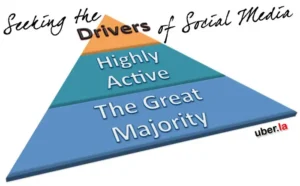
About nine months ago, I started working in the cloud. My company, Digital Realty, is the *largest* provider of data centers in the world. And in my mind, I thought, “that company name is cool.” What I didn’t understand is that DLR is a real estate company. Yes, we’re a very specialized realtor, but in fact, we sell square footage of buildings with high-bandwidth connectivity, a high-level of security and redundant power and cooling, and ESG, the environmental, sustainability, and green factors. We’re not the cloud, as I thought. We’re where the cloud lives.
I got a crash course in “the cloud” and “the internet” when I started my journey with DLR. The first stop was an amazing book called Tubes. And as I began to understand more about the real product we were offering, while very complex and technical, is really square footage and megawatts of power. Watch Mr. Blum’s TED Talk about Tubes: Search for the Internet.
One of our data centers in Chicago, for example, consumes as much power as the entire Logan Airport. And as of last week, DLR owns 316 data centers across the globe. And we’re more than walls, backup generators, and guards protecting your data. Our competitive advantage comes in the rest of the equation in what business has termed “digital transformation.” Every business is moving its IT into the cloud and into data centers and colocation spaces. And we’re even at a different inflection point, businesses early into the cloud are now trying to pull data back out of the more expensive “always online” storage. There’s now a push to put some data in the cloud and more data in data centers and storage (virtual and physical) that is terrestrially based. Of course, the internet and the cloud are both terrestrial. Hybrid-cloud is the term used today for a blended orchestration of the cloud and non-cloud data with the compute power in data centers, and the connectivity provided by companies like DLR.
Today, it’s a different world. We have what is called “carrier-neutral” data centers. We don’t discriminate if your traffic is coming via ATT, Verizon, or T-mobile, we simply offer you a port and bill you for the volume of data that is passed through that port, regardless of where it came from. In this same way, our business is finding better ways to interconnect with our data centers, with all the data centers around the world. Even the hyper-scalers like AWS, Google Cloud, or Azure put their computers inside our data centers. We’re not “the cloud” we are where the cloud is housed and powered.
When the signal comes out of your phone, off your laptop or iPad, I used to think of data as flying around like the lines in the photo above. What actually happens, and happens really really fast, is your requests or posts do fly through the air (radio if it’s a phone, wifi if it’s your home router) and then go into physical “tubes” through physical data centers and across the globe, let’s say you are looking at a website from New Zealand, and the signals have to go round-trip before the image/data is updated at your house.
The cables, cross-connects, and virtual interconnects travel all over the land and under the sea to connect your requests and your signals with the same from every connected computer around the world.

The world is getting smaller. The Earth is flat, as Thomas Freidman has informed us. For my part, I’m trying to write complex content in plain English with as few buzzwords as possible. It’s been a steep journey up the learning curve of what my company does. And I’m still trying to get my head around what we do better than our largest competitor.
We’re not the cloud. We’re where the cloud lives.
John McElhenney — let’s connect online
@jmacofearth & Facebook & LinkedIn & The Whole Parent



